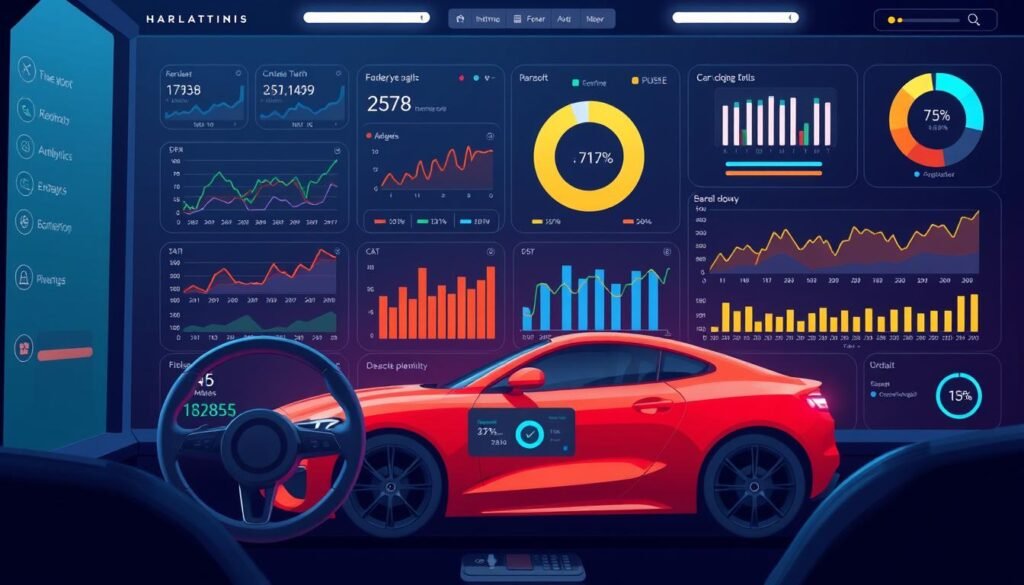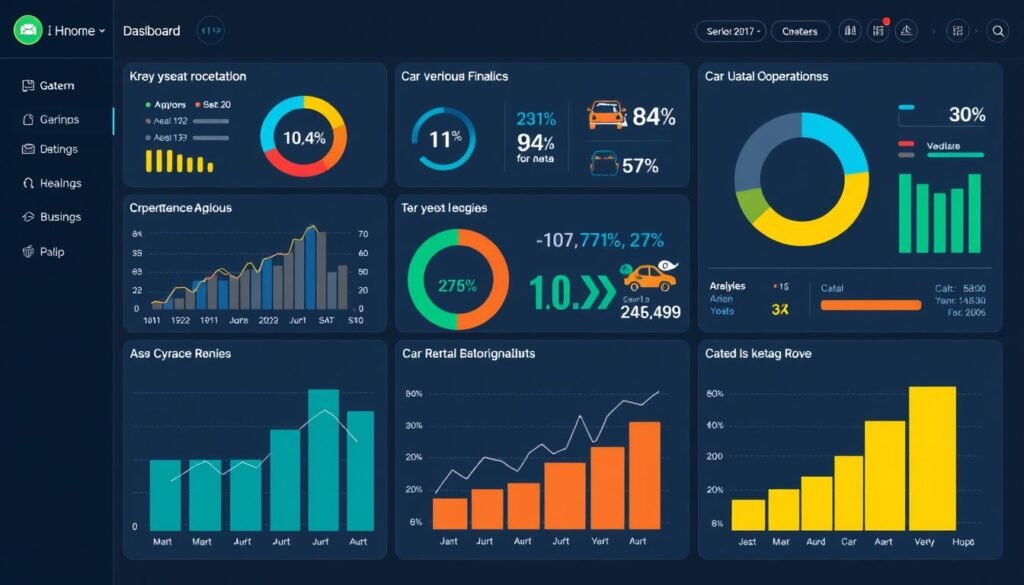HOME / SINGLE POST

Are you maximizing your car rental business’s profitability in today’s competitive market?
Effective revenue management is crucial for car rental companies to stay ahead. By optimizing pricing, inventory, and operational decisions, you can significantly impact your bottom line.
The car rental industry faces unique challenges, including fleet mobility and seasonal demand fluctuations. By understanding these challenges and implementing proven strategies, you can transform your business’s financial performance.
To succeed in the competitive car rental industry, understanding revenue management fundamentals is key. Revenue management involves strategic decisions about pricing and inventory to maximize revenue.
Inventory classification is a critical aspect of revenue management in the car rental industry. By categorizing vehicles based on their characteristics, car rental companies can set prices that reflect their value.
Vehicles can be classified by their function, such as economy, compact, or luxury cars. This classification helps in determining the pricing tier for each category, ensuring that customers are charged appropriately based on the vehicle’s features and benefits.
Classification by size is another method used to differentiate pricing. Larger vehicles or those with more features are typically priced higher than smaller, more basic models. This approach allows car rental companies to offer a range of options to customers while optimizing revenue.
The pricing structure in the car rental industry is complex, involving various factors to determine the final cost to customers. Two main categories of rate fences are used: physical and non-physical.
Physical rate fences include factors such as age restrictions, vehicle type, one-way rental fees, and additional amenities like refueling or security plans. These fences help car rental companies to segment their market and charge accordingly.
Non-physical rate fences involve booking time, payment timing, membership benefits, and rental duration. For instance, advance booking or longer rental periods can lead to discounted rates, encouraging customers to plan ahead or commit to longer rentals.
By understanding and implementing these pricing strategies, car rental companies can optimize their revenue while maintaining customer satisfaction. Effective pricing structures enable businesses to segment their market effectively, ensuring that prices are fair and competitive.
In the competitive car rental industry, revenue management techniques are essential for success. As Erin Kemp from Bumper notes, “Maintenance and depreciation costs are expensive. Maintaining a large fleet can be costly, and vehicle values drop over time.” This highlights the importance of effective revenue management in car rental businesses.

Understanding market demand is crucial for car rental companies. By analyzing historical data and market trends, you can forecast demand and adjust your fleet accordingly. This ensures that you have the right mix of vehicles available to meet customer needs, maximizing utilization rates.
Implementing dynamic pricing allows car rental companies to adjust prices based on demand fluctuations. This strategy helps to maximize revenue during peak periods and maintain occupancy during off-peak times. By leveraging data analytics, you can optimize your pricing to stay competitive in the market.
Fleet optimization is critical to ensuring that your vehicles are used efficiently. By balancing fleet size with demand patterns, you can minimize idle inventory costs. Techniques such as strategic vehicle movement between locations can help meet demand without incurring excessive repositioning costs. Utilizing fleet management software like FleetFinesse can simplify this process, ensuring your fleet is always optimized.
By incorporating these revenue management techniques, you can enhance your car rental business’s profitability and competitiveness. Effective management of your fleet and pricing strategies will lead to improved customer satisfaction and increased revenue.
The key to unlocking higher revenue in car rentals lies in embracing cutting-edge technology solutions. By harnessing the power of data analytics, AI, and business intelligence tools, car rental companies can make informed decisions that drive profitability.
AI-powered revenue management solutions, such as car rental revenue management software, are revolutionizing the way car rental companies manage their pricing and inventory. These tools analyze vast amounts of data to provide actionable insights, enabling businesses to optimize their revenue.

With AI-driven solutions, you can automate complex processes, predict demand fluctuations, and adjust pricing strategies accordingly. This not only enhances revenue but also improves operational efficiency.
Data analytics and business intelligence tools are crucial for car rental businesses, offering insights into customer behavior, demand patterns, and pricing opportunities. By leveraging these tools, you can develop targeted marketing strategies and optimize your fleet utilization.

Key performance indicators (KPIs) such as revenue per unit (RPU) and gross operating profit per available car (GOPPAC) become more manageable with the right tools. You’ll be able to track these metrics in real-time, spot trends, and make adjustments quickly to maximize revenue.
In today’s dynamic car rental landscape, revenue management is no longer a luxury, but a necessity for companies to succeed. With the introduction of car rental software solutions, it has become far simpler to maximize revenue.
To implement effective revenue management strategies in your car rental business, you’ll need to assess your current practices and gradually adopt advanced techniques. This includes understanding how to balance short-term revenue gains with long-term customer satisfaction to build a sustainable business model.
Integrating your revenue management approach with your broader marketing strategy is also crucial. This ensures consistent messaging and pricing across all customer touchpoints, ultimately driving business success. By leveraging data analytics and business intelligence tools, you can make informed decisions that boost revenue and enhance customer satisfaction.
Some key takeaways for your car rental business include:
By following these tips and adopting a robust revenue management approach, you can drive success in your car rental business and stay competitive in the market. Now is the best time to create a revenue forecasting system and start maximizing your revenue potential.
Never miss any important news. Subscribe to our newsletter.